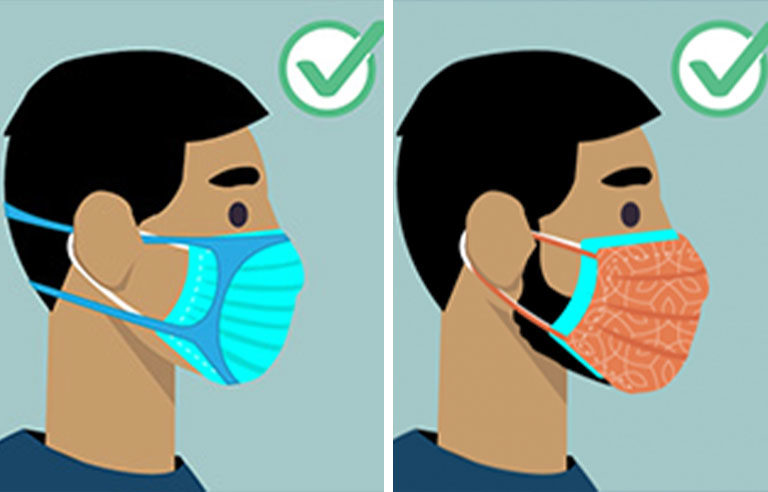COVID-19: Study explores which facemask combinations, modifications work best

Arlington, VA — Adding a brace or wearing a cloth facemask over a medical mask increases protection against aerosols carrying viruses – including SARS-CoV-2, the virus that causes COVID-19, results of a recent NIOSH study suggest.
Researchers tested, on a sample of humans and mannequins, two types of medical masks and three varieties of cloth masks purchased online. The researchers also looked at multiple mask fit modifications while simulating coughs and exhalations through a source control measurement system.
Findings show that using a brace over a medical mask blocked about 99% of exhaled aerosols and 95% of cough aerosols. Wearing a cloth mask over a medical mask prevented the passage of around 91% of exhaled aerosols and 85% of cough aerosols.
Nonmodified medical masks, meanwhile, blocked about 56% of cough aerosols and 42% of exhaled aerosols. Use of earloop toggles or an earloop strap, or knotting and tucking the mask enhanced aerosol-blocking performance. Crossing earloops or placing a bracket under the mask didn’t improve performance.
“Since the start of the COVID-19 pandemic, there has been considerable confusion about the most effective use of facemasks, especially among the general public, to reduce the spread of infection,” Ann Marie Pettis, president of the Association for Professionals in Infection Control and Epidemiology, said in a press release. “The NIOSH study findings are important and timely because they identify specific, practical combinations of facemasks and mask modifications that may improve mask seal and thereby measurably reduce the expulsion of infectious aerosols into the environment.”
| Sign up for Safety+Health's free monthly email newsletters and get the news that's important to you. |
The Centers for Disease Control and Prevention advises choosing facemasks that:
- Have two or more layers of washable, breathable fabric
- Completely cover the user’s nose, mouth and chin
- Fit snugly against the side of one’s face with no gaps
- Have a nose wire to prevent air from leaking from the top of the mask
The study was published online Dec. 15 in the American Journal of Infection Control, APIC’s official, peer-reviewed journal.
Post a comment to this article
Safety+Health welcomes comments that promote respectful dialogue. Please stay on topic. Comments that contain personal attacks, profanity or abusive language – or those aggressively promoting products or services – will be removed. We reserve the right to determine which comments violate our comment policy. (Anonymous comments are welcome; merely skip the “name” field in the comment box. An email address is required but will not be included with your comment.)

